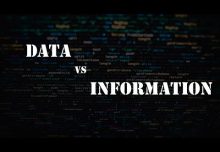
The organization employs automated mechanisms to implement changes to the current information system baseline and deploys the updated baseline across the installed base. A higher authority can be a Change Control Board (CCB), Project Management Office (PMO), or any other stakeholder as mentioned in the project management plan. Since this change is related to the configuration of the product, you will deal with this change using the configuration management system.
The procuring activity’s CM office should publish procedures
for CCB operation so that all members understand its importance
to the acquisition process. A CCB secretariat schedules meetings,
distributes agendas, records CCB decisions, and distributes minutes
and directives to parties who are assigned implementing action(s)
or have a need to know. The CCB operating procedures should also
define target processing times for ECPs to assure timely staffing,
approval and implementation. CCB charters are normally approved through the government procuring
activity official administrative channels. All CCB members must
be present at each CCB meeting and should be familiar, from their
functional perspective, with the changes being considered. CCB members
are obligated to make their position(s) known to the chairperson;
and ultimately to approving the CCB directive/order (when required)
noting their agreement or disagreement with the decision.
Configuration Control Board
Change description, reason for change and who made the change, current revision of the design, date, time, etc. Consistent with the federated architecture approach described in Section 3, essential architectural information must be registered with DARS so that discovery of reusable architectural data can be accomplished throughout the Department. Individual data entities and other artifacts are similarly registered in the DMR. These CM activities are complementary with existing DoD CM processes for the DARS, the DoD Information Technology Standards Registry (DISR), and the Metadata Registry (MDR). A more comprehensive description of the overall CM Process is found online in the DoDAF Journal. You are constructing a school building and the client requests that you increase the number of rooms from ten to fifteen.
The functional architecture must be documented to provide the diagrams, drawings, models, and specifications against which software design synthesis can be performed and evaluated. Functional architecture includes the design documentation shown in Table 11.1. Signals, which link both blocks, are measured output, y and manipulated input, u. The signal w represents exogenous inputs, such as disturbances, references, configuration control boards noises and inputs from uncertainties and the exogenous output, z, is the control objective. Many control performance specifications can be expressed as the H∞ norm of certain closed-loop transfer functions. Such functions could be the sensitivity function, S, complementary sensitivity function, T, the input sensitivity function, KS, or more generally, a closed-loop transfer function from w to z, i.e. ||Tzw||∞.
CA Service
Results show that DMC is able to greatly reduce the energy consumption, both in terms of aeration and pumping energy. Furthermore, ammonia concentration in the effluent and total nitrogen are significantly reduced. Among the different proposed strategies, C1 and C3 are the best in term of pollutant removal, but they are not the most convenient for energy consumption. C2 and C4 reduced AE and PE, but with a little increase of the ammonia and total nitrogen effluent concentration. The best choice as compromise between the two control objectives is configuration C4, which uses five manipulated variables. Change management and configuration management do not compete for the same space.
Bugs and flaws are normal in every project, and sometimes they will make it through even the most rigorous review processes, the important part is having clear plans to deal with them when they arise. When critical bugs or flaws are found in production for the civil rights portal, a business owner or their designee will request a hotfix. Once the solution is identified, the hotfix will undergo PR review and QA simultaneously. Once automated tests pass, there is a quick round of QA, then the code is merged into the upcoming release. Then the code will be merged into master, which will also auto-deploy after tests. The Change Control Board and Change Advisory Board share a similar focus of reviewing and making decisions for change requests, though their scopes vary widely.
Related Controls
An example of a change management system can be additional funding requirements or a schedule extension, while an example of configuration management can be an extra feature added to the product. If the change request is approved, you will update the concerned baseline, update the project documents, and inform the concerned stakeholders. In the change management system, the change request is analyzed for any possible impact on any other project objectives. In the change management system, you manage the changes related to the project scope, planning, and baselines. Here you manage changes related to project management plans, processes, and baselines.
DM2 issues impacting the foundation are forwarded to the International Defense Enterprise Architecture Specification (IDEAS) Group for consideration. When a number of changes have accumulated, the TWG recommends a new DM2 baseline version be established and released. Upon, approval by the CCB, the new DM2 is published along with a record of changes from last baseline and a new working copy is setup. Poor change control can significantly impact the project in terms of scope, cost, time, risk, and benefits. Therefore, it is crucial that the CCB members are sufficiently equipped with information, experience, and support necessary to make the best decisions. Since all existing CI configurations cannot often be updated simultaneously,
careful consideration must be given to either delaying or accelerating
the incorporation of the change to minimize the impact.
The Configuration Control Board’s Role in Change Management
No matter the frequency of meetings, the Change Manager should communicate the scheduled change required well in advance of meetings, so individuals on the CAB are prepared to make the best decisions. IT service management has long suffered from bureaucratic approaches and general risk aversion—which results in layers of approvals, development delays and confusion, and, ultimately, failure to deliver value to customers in an agile manner. This situation is exacerbated in companies with legacy systems and structures that prohibit the flexibility for change that digital transformation requires.
- Actions directed
by the CCB include both contractual actions and tasking orders for
Government activities, as applicable. - A CCB secretariat schedules meetings,
distributes agendas, records CCB decisions, and distributes minutes
and directives to parties who are assigned implementing action(s)
or have a need to know. - C2 and C4 reduced AE and PE, but with a little increase of the ammonia and total nitrogen effluent concentration.
- Please note that in the first case, you raised the change request to increase the deadline of the project by one week.
- The bigger the engagement, the more likely you won’t be able to plan or anticipate everything.
- The Change Control Board and the Change Advisory Board are similar organizational structures play vital roles in decision making.
Loading the wrong FPGA version to a board could result in unpredictable behavior or component damage. By careful FPGA design configuration management and part programming and tracking, serious problems can be avoided. With the freedom to change, recompile and reload the FPGA design to a board comes the responsibility to keep track of changes and keep FPGA design versions under configuration control. It is not enough to always have access to the latest design FPGA version. Occasionally it may be necessary to go back ten or more versions of the FPGA design to revisit a specific problem or subsequent fix. This can only be accomplished if versions of the FPGA design are well documented and carefully stored away for future retrieval.
DevOps on the new civilrights.justice.gov site
Using appropriate tools and techniques can significantly increase the effectiveness and efficiency of CCB meetings and reviews. CM software, for example, automates and simplifies the CM tasks, such as creating, storing, tracking, and reporting change requests and CIs. It also enables collaboration between CCB members and other stakeholders, as well as providing audit trails and security features. Online platforms are another beneficial tool which allow CCB members to conduct meetings and reviews remotely with video conferencing, screen sharing, chat, and file sharing features. Additionally, decision-making techniques can help analyze, compare, and choose among different options for change requests. These techniques include criteria-based evaluation, multi-voting, and consensus – each requiring active participation from CCB members.
Each structural element specification, diagram, and drawing should be placed under technical configuration control before being included in the software technical data package. One of the most difficult aspects of CCB meetings and reviews is effectively managing conflicts and expectations among the CCB members and other stakeholders. Conflicts can arise due to varying perspectives, interests, preferences, or priorities for change requests, and expectations can differ based on the scope, complexity, urgency, or feasibility of the change requests.
How a Change Advisory Board makes decisions
Suppose you are working on a project to construct a school building with ten classrooms. For example, suppose you are developing a product and the client requests the addition of some extra features. Generally the reviewers check if the release matches the acceptance criteria, if there are unusual bugs or inconsistencies and you should be ready to bring in the relevant business interests to approve. These tickets will be more detailed with design and implementation components.




